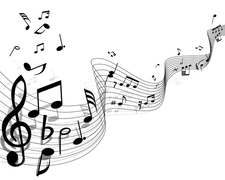Ardour DAW – Fifth Generation
Symphony No. 5

© Lead Image © Pavel Konovalov, 123RF.com
The fifth generation of the free Ardour digital audio workstation is easier to operate, offers more Lua support, and comes with a variety of improvements and extensions.
Just six weeks after the announcement of a forthcoming new Ardour version, the Ardour project released the fifth generation of its free digital audio workstation (DAW) [1]. The impressive list of new features does not promise a total revolution of the proven music production suite, but a variety of improvements and extensions definitely have revolutionary potential. I investigated how the software works in practice.
Saddle Your Keyboards
The free Ardour 5 software is not only available from Ardour's GitHub repository in the form of the current source code [2], the project also offers tried-and-tested installation packages – for Linux, Mac OS, and now, starting with Ardour 5, Windows – in return for a single donation in an amount that you get to choose.
If you want to avoid the fairly complex process of building Ardour yourself from source [3], you might want to acquire such an installation package. Although Ardour can be installed from the repositories of all the major distributions, the packages offered by the project itself are generally more up to date and often more stable than the packages for Debian and openSUSE. Also, the developers on the Ardour.org forum might be slightly irritated if you ask questions about problems with the distribution packages. The packages built by distribution maintainers always contain small deviations from the current state, over which the Ardour team has no influence.
[...]
Buy this article as PDF
(incl. VAT)
Buy Linux Magazine
Subscribe to our Linux Newsletters
Find Linux and Open Source Jobs
Subscribe to our ADMIN Newsletters
Support Our Work
Linux Magazine content is made possible with support from readers like you. Please consider contributing when you’ve found an article to be beneficial.

News
-
Mozilla Plans to AI-ify Firefox
With a new CEO in control, Mozilla is doubling down on a strategy of trust, all the while leaning into AI.
-
Gnome Says No to AI-Generated Extensions
If you're a developer wanting to create a new Gnome extension, you'd best set aside that AI code generator, because the extension team will have none of that.
-
Parrot OS Switches to KDE Plasma Desktop
Yet another distro is making the move to the KDE Plasma desktop.
-
TUXEDO Announces Gemini 17
TUXEDO Computers has released the fourth generation of its Gemini laptop with plenty of updates.
-
Two New Distros Adopt Enlightenment
MX Moksha and AV Linux 25 join ranks with Bodhi Linux and embrace the Enlightenment desktop.
-
Solus Linux 4.8 Removes Python 2
Solus Linux 4.8 has been released with the latest Linux kernel, updated desktops, and a key removal.
-
Zorin OS 18 Hits over a Million Downloads
If you doubt Linux isn't gaining popularity, you only have to look at Zorin OS's download numbers.
-
TUXEDO Computers Scraps Snapdragon X1E-Based Laptop
Due to issues with a Snapdragon CPU, TUXEDO Computers has cancelled its plans to release a laptop based on this elite hardware.
-
Debian Unleashes Debian Libre Live
Debian Libre Live keeps your machine free of proprietary software.
-
Valve Announces Pending Release of Steam Machine
Shout it to the heavens: Steam Machine, powered by Linux, is set to arrive in 2026.

